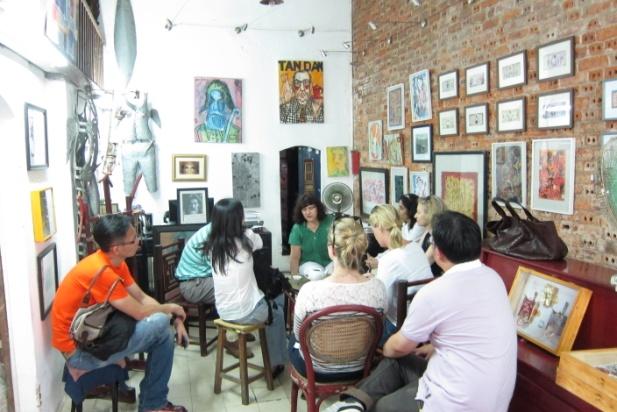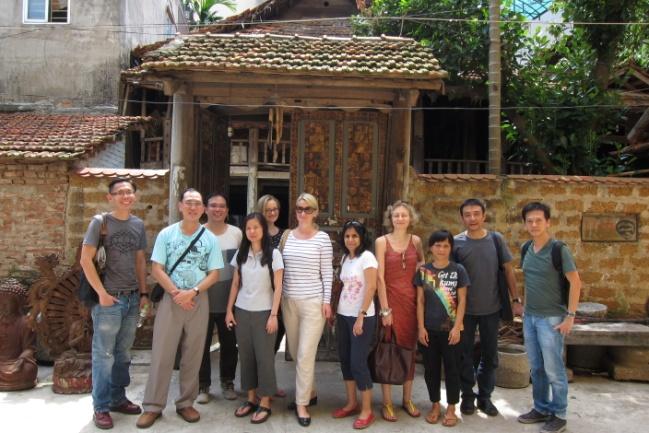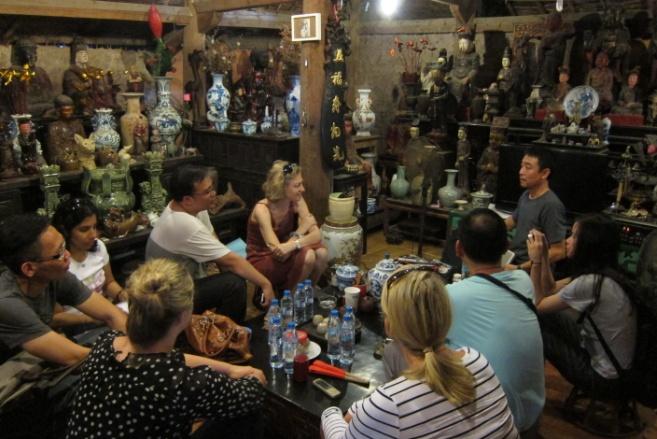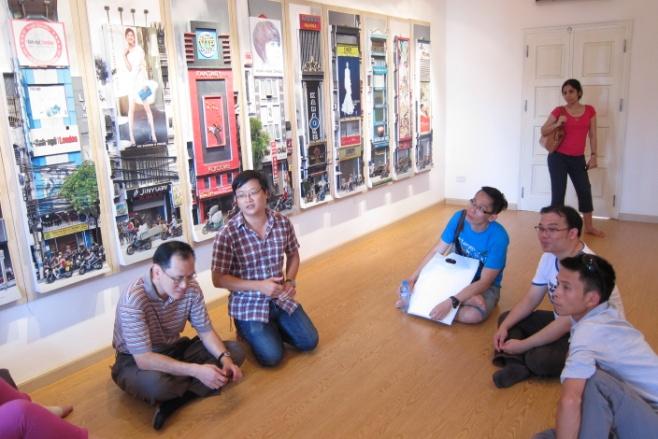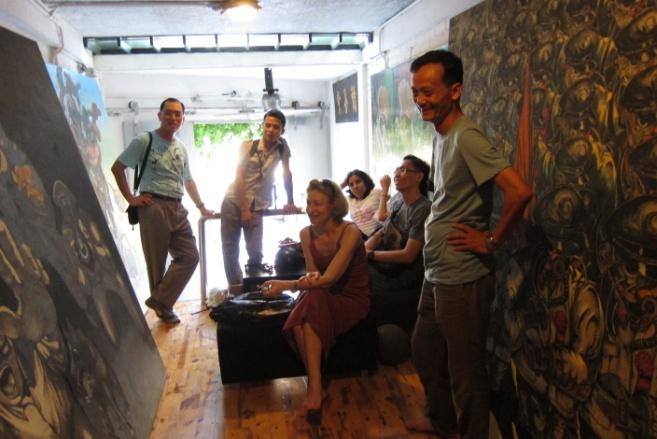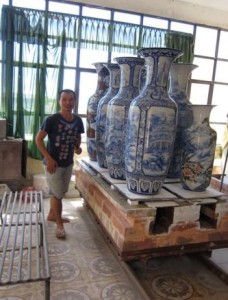by Durriya Dohadwala –
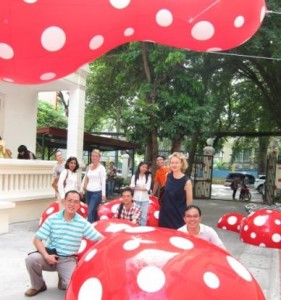
The study group at an exhibition of Yayoi Kusama at the Japan Foundation Centre for Cultural Exchange.
Our group of nine (six students and three lecturers) arrived on a Thursday morning ready to brave the hot and humid summer of Hanoi. Our first outing was to visit the iconic art space, Salon Natasha and meet Dr Natalie Kraevskaia who owns and runs it. Dr Kraevskaia arrived in Vietnam almost 30 years ago and stayed on after she married Vietnam’s pioneer contemporary artist Vu Dan Tan. The Salon, which is also their home, provided Hanoi’s artists with a much needed cultural space post Doi-Moi (Innovation) in the early 1990s. Though the salon is now closed as an art space and only serves as Dr Kraevskaia’s home and office, its walls host many of Vu Dan Tan’s signature works done from the 1980s until his death in 2009. The conceptual works are made of found materials like cardboard, and cigarette boxes and deal with Vietnam’s political and social issues. Over endless cups of tea Dr Kraevskaia talked to us about Vietnam’s formal and underground contemporary art scene, the Salon’s role in promoting contemporary art in Vietnam in the early Doi Moi period and censorship issues. We wrapped up the evening with a lovely dinner at a local restaurant in Hanoi’s Old Quarter and a walk around the famous Hoan Kiem Lake.
The next morning we started the day with a visit to the Goethe Institute. The German cultural centre opened its office in Hanoi in 1997 and since then has been instrumental in promoting cultural interaction between the two countries. The institute has sponsored several contemporary art exhibitions with a view to encourage new perspectives and provide opportunities to those who have been underrepresented in the local art scene, like women artists.
Next we visited another important art space – Nha San Duc which is run by the well known artist/activist Tran Luong and antique restorer Manh Duc. Set up in 1998 as an alternative artist-run space, the facility is a traditional Muong stilt house which was transported to its current location from the Hoa Binh province. During events, the first floor is cleared for installations and performances but the second floor houses a treasure trove of antique statues and collectibles which are for sale. Providing a space for exhibitions and performances, the space has played a vital role in the development of contemporary art in Hanoi.
During our four days in Hanoi we had the chance to meet several other artists besides Tran Luong. We visited Ngyuen The Son in his studio, Le Quang Ha in his home/studio and Bui Cong Khanh in the Bat Trang ceramic village. All these visits and interactions provided us with a unique understanding of the environment and socio-political hurdles that the contemporary artists face in producing their work. The themes that these avant garde artists address are usually socio-political in nature and therefore censorship is often an issue for many of them. There are strict guidelines on what is not permissible (sexuality, religion and minority issues and negative portrayal of the country and its politics) and officials are often likely to over censor in a bid to be careful. As a result, many artists have found performances and videos to be a more convenient medium which is portable, harder to censor and easier to share within and out of the country.
The study trip was an invaluable experience. It was heartening to see how the artists have persevered in Hanoi’s restrictive environment. It was also an opportunity to experience the unique blend of old and new, East and West in the Vietnamese culture which makes its art so different from other parts of the South East Asian region.This article was written by Durriya Dohadwala, who is currently a student of the MA Asian Art Histories Programme


